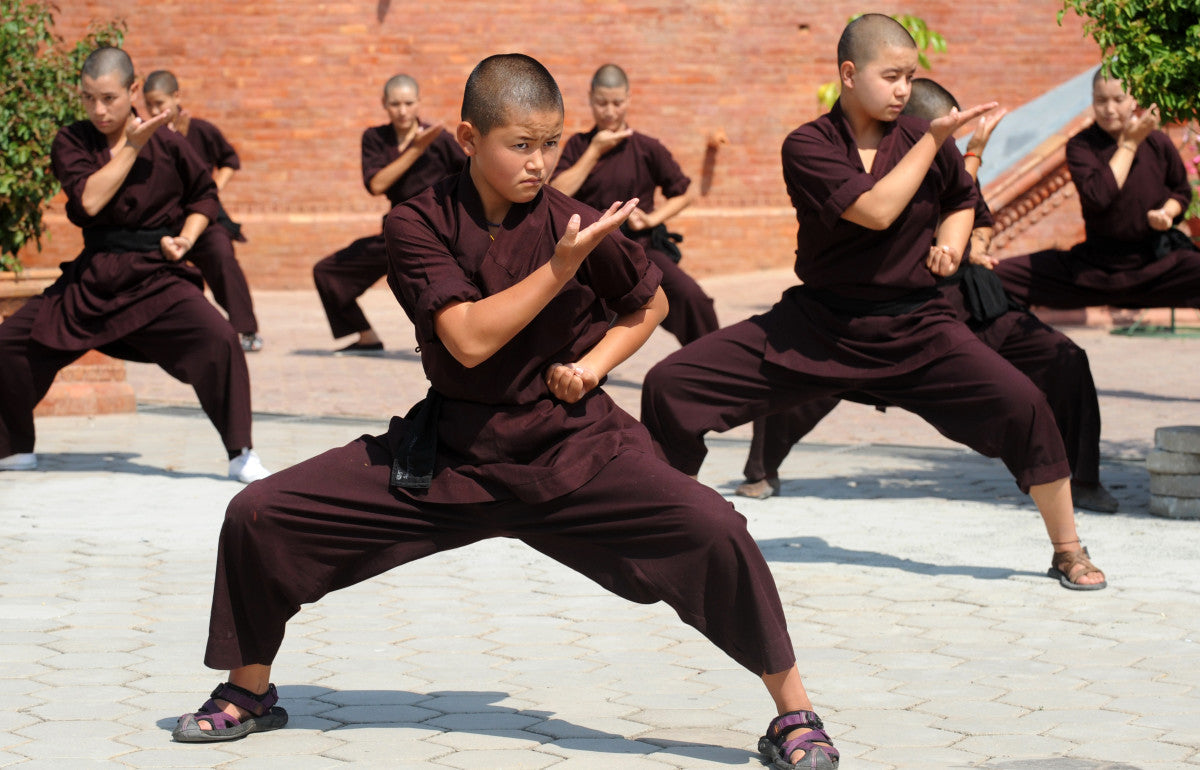
The Origins of Kung Fu
Chinese culture is endlessly rich and fascinating, and we occasionally like to dip in and focus on a subject we think you will find interesting. Today we’re taking a look at the ancient art of kung fu.
Chinese kung fu, also known as wushu or Chinese martial arts, is well known in the West as an example of traditional Chinese culture. It is probably one of the earliest and most long-lasting sports that uses both brawn and brain.
The origins of kung fu
The theory of kung fu is based upon classical Chinese philosophy. Over its long history it has developed as a unique combination of exercise, self-defence, self-discipline and art.
Chinese kung fu can be dated back to primeval society. At that time people used cudgels to fight against wild beasts but gradually gained more experience in self defence. When the Shang Dynasty (1600–1046 BC) began, hunting was considered an important part of kung fu training.
The theory of kung fu
Chinese kung fu is a structure of theory and practice and combines the techniques of self-defence with an emphasis on well being. A distinction is made between ‘external’ and ‘internal’ kung fu. It is said that in external kung fu, you exercise ‘your tendons, bones and skin'; in internal kung fu, you train ‘your spirit, your qi, and your mind’. For this reason it is said that internal kung fu can continue later in life, even when the external body starts to let us down.
Taijiquan

Taijiquan (pronounced tie-jee-chwen), and also known as tai chi, is a Taoist internal martial art and is popular in Western culture. It is said that taijiquan was developed by the Taoist immortal Chang San-Feng, who is said to have drawn inspiration for the art by watching a fight between a snake and an aggressive eagle (history does not tell us who won!).
Chinese Qi Gong
Qi gong (literally ‘breath exercise’) is an invaluable part of traditional Chinese medicine. Its primary aim was the search for longevity of life, with the ultimate aim of immortality. This is a concept which has captured the Chinese imagination for centuries.
Kung fu heroes in the West
For many of us in the West, our ideas of kung fu have been shaped by the popularity of actors in Hollywood films. Here are a few of our ‘Hollywood heros’.
Bruce Lee (1940 – 1973) was a Chinese-American martial artist and actor, who is considered by some as the most influential martial artist of the 20th century and an important cultural icon. He used Wing Chun, a branch of Chinese kung fu, as his base, learned from the influences of other martial arts, and later created his own martial art philosophy called Jeet Kune Do. His most famous films are The Big Boss, Fist of Fury, Way of the Dragon, Enter the Dragon, and Game of Death.
Jackie Chan (1954) is a Hong Kong martial artist, actor and singer. He began his film career as a stuntman in the Bruce Lee films. Now a cultural icon, he is widely known for injecting comedy and stunts into his martial arts performances. In 2008 he sang at the closing ceremony of the 2008 Beijing Summer Olympics. He has starred in over 100 films – some famous ones include Rumble in the Bronx, Rush Hour, and Who Am I.
Jet Li (1963) was born in Beijing and is a five-time national wushu champion. After retiring from wushu at the age of 17, he went on to star in many martial arts films, of which the most notable are the Once Upon A Time in China series, portraying famous folk hero Wong Fei Hung. His roles in Hollywood films include being a villain in Lethal Weapon 4, acting alongside Sylvester Stallone in The Expendables, as well as Hero, Fearless, and The Mummy: Tomb of the Dragon Emperor.
And finally… Kung Fu Panda: the much loved cartoon panda, voiced by Jack Black, who is now starring in his third film.





Leave a comment